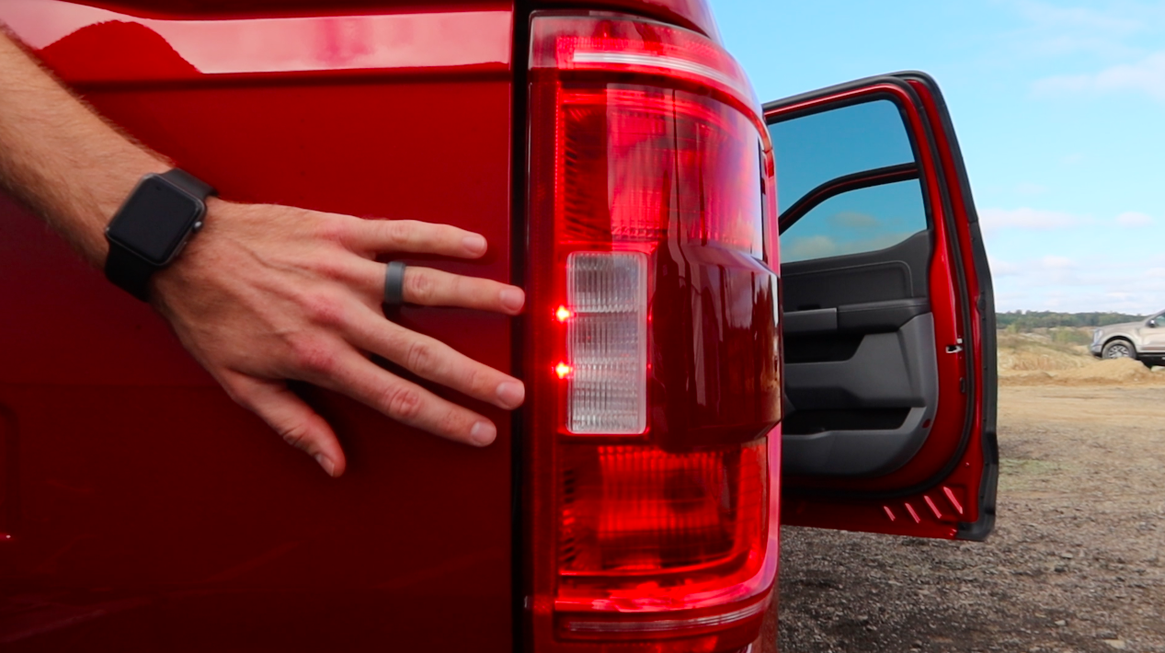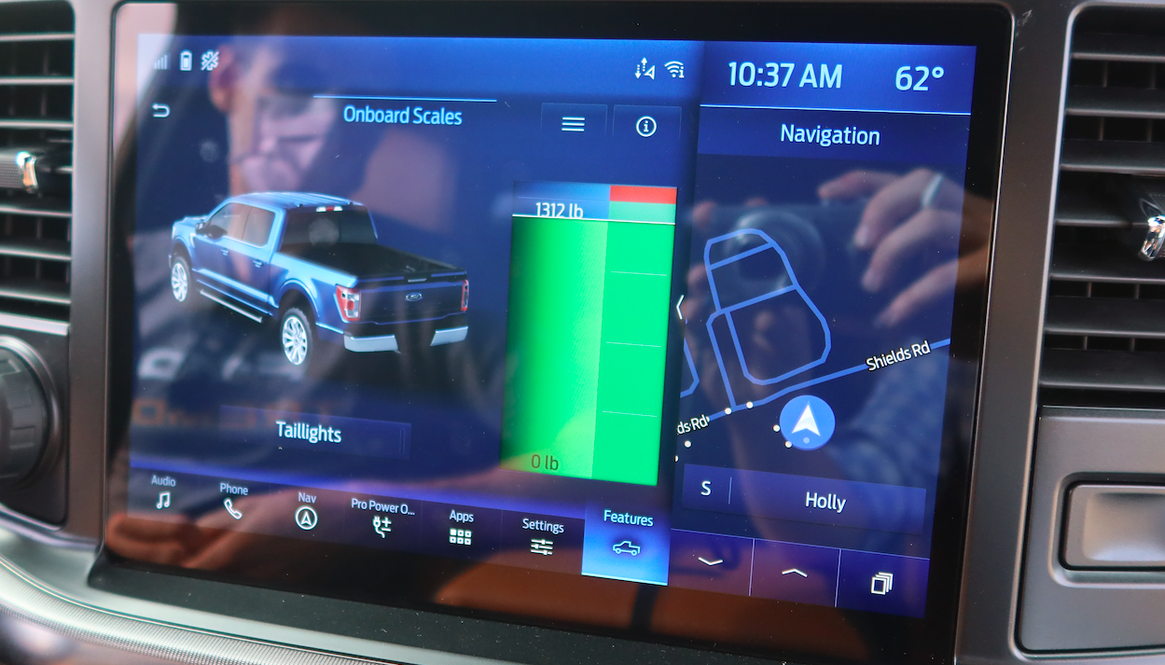The 2021 Ford F-150 has a feature called "Onboard Scales," which weighs the ute's trailer load to ensure you don't go beyond its payload capacity.
The Onboard Scales use the taillights of the ute, to tell you how closely in weight the vehicle is loaded to its max payload. The information can also be displayed on the infotainment screen, or a phone app.

If the taillights remain below four bars, you're good to go. The lights will blink once you hit the payload limit.
The ute also uses a "Smart Hitch" feature, which uses the bars to help the driver determine when the vehicle has the appropriate trailer tongue weight.
With this feature, you want the two centre bars to be lit. If the tongue weight is too low, the lower bar will blink, and the upper bar will blink if it’s too high.
It's important that the tongue weight is within range, as it can affect how the ute drives. A tongue weight that's too high can cause the vehicle to under-steer and it can interfere with braking. But if it's too low, it can cause an uncontrollable trailer sway. And the same goes for payload limits.
Ford system uses ride height sensors, which tell the system to stop filling air springs when a desired height has been reached. This is fairly standard with vehicles equipped with air suspension.
While the F-150 doesn’t have air suspension, it does have adaptive damping. This uses ride height sensors to monitor particular vehicle handling characteristics like body roll, and to get an idea of road conditions. The system uses this to adjust damper settings.
According to Ford, "a computer within the F-150 analyzes multiple signals collected from high-resolution sensors – adjusting vehicle response to each situation by controlling valves in the shocks."
"Damping force is used to control unwanted motions such as bounce, pitch and roll reducing the severity the truck – and its passengers – will feel from traveling through the pothole. When the edge of a pothole is detected, the dampers firm up, preventing the tires from dropping as deep into the hole. Tuning can be adjusted by selecting any of the available drive modes."

The location of the weight on the ute is irrelevant. Onboarding Scales provide an overall truck payload figure.
“We have sensors in each corner, and that helps us identify where the weight is loaded...the only information we provide is overall load. Rather than doing it individually per axle, we just add up the overall number.”
The system is also only accurate within 90kg, which is quite a large range. So, while the feature may not be 100% accurate (or close to it), it gives the driver a good idea of how much they can load up their trailer, and keeps them from overloading it.








